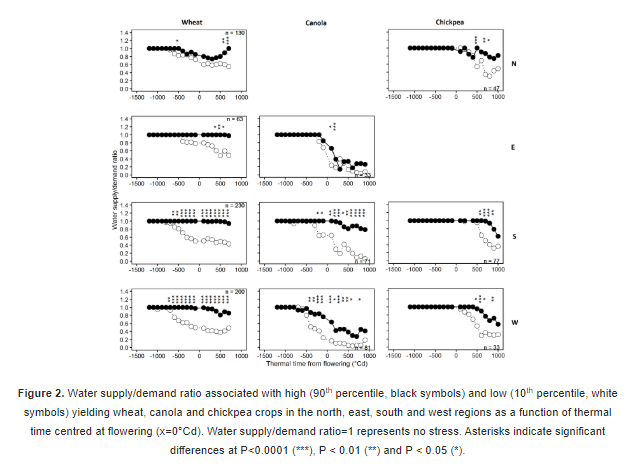At what stages are winter crops most sensitive to temperature and water stress?
The authors of this paper note in the conclusion: 'Our study supports that in all crops, higher temperature in the non-stressful range is associated with yield reduction when it occurs before flowering in the north, east and south and in all regions after flowering. While wheat and chickpea were sensitive to temperatures above 30 °C from early and late in grain filling respectively, chickpea was sensitive to low temperatures from flowering and Canola was overall the most sensitive to water stress. Furthermore, the interaction between early growth and drought has regional relevance.' Please access the full paper via the link below if this research interests you
The take home messages from this GRDC funded research are below. Please access the full paper via the link below for methodology, references, acknowledgements and discussion.
Take home messages from the paper include:
- Analysis of Australian national variety trials demonstrates impact of climate on wheat, barley, Canola, chickpea and field pea grain yield.
- In all crops, higher temperature in the non-stressful range is associated with yield reduction when it occurs before flowering in the north, east and south and in all regions after flowering.
- In cereals, yield loss was greater when high temperature or water stress occurred during stem elongation.
- In Canola and pulses, yield loss was greater when high temperature or water stress occurred from shortly before flowering and into pod filling.
- Canola was overall the most sensitive to water stress.
The interaction between temperature and water stress had a regional pattern.
